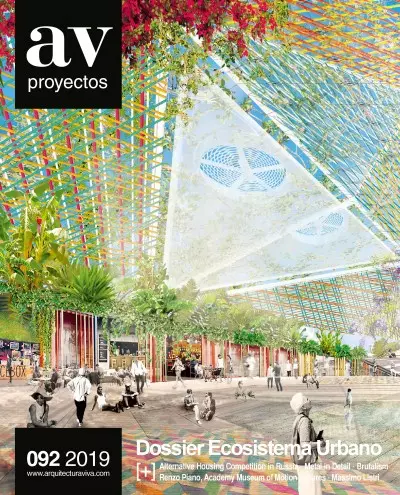

On view through 24 October, the art installation PlanTable transforms the urban environment of Boston’s Chinatown into an ecological refuge. Curated by Lani Asunción and presented by the Pao Arts Center as part of the Un-monument initiative, it amoun
Extreme heat is not only endangering the habitat of an infinite number of species, but also altering the very way we use our cities, a problem which disproportionally affects low-income communities. In the spirit of working toward a solution, a modul
The main element is an inflatable ‘cloud’ placed on a wood structure, which together create a space for learning and for raising environmental awareness. The installation includes lighting and color to represent climate change and air purification s
Ten European teams were invited by the Visual Arts Center in Dordrecht – in collaboration with the Amsterdam team Carve –, to present their design proposals for creative and inventive play objects for children of different ages, with the purpose of c
According to the ‘Reggio approach’, the environment can be seen as a ‘third educator’. For this reason, the spaces in the school are extendable and adaptable, with in-between areas with no predefined use to generate constantly changing spatial situat
The frenzied building processes that take Tplace in the new urban developments of major cities contrast with the slow pace of growth of the vegetation, which helps to condition their open spaces. To counteract this time lapse in the case of the new u
A reinterpretation of local architecture has guided the construction on stilts of this house-shelter for a former rugby player in Ranón, 19 kilometers from Avilés, on the coast of Asturias. The essence of the hórreo (the typical granary of the region
The architects Belinda Tato and José Luis Vallejo of Ecosistema Urbano, who have been teaching for some years now at Harvard University’s Graduate School of Design (GSD), have capped first place in the competition for the redevelopment of the waterfr
Frente a las maneras tradicionales de intervenir físicamente sobre la ciudad, el urbanismo instantáneo y efímero opta por incidir en los hábitos y los procesos sociales de los ciudadanos.
El uso democrático de las herramientas digitales permite generar un concepto flexible de espacio público basado en la participación espontánea de los ciudadanos.
Uno de los objetivos prioritarios de la Fundación COAM es ofrecer una plataforma de difusión del trabajo de los arquitectos madrileños. Y esa loable aspiración ha cristalizado en ‘Monoespacios’, un ciclo expositivo coordinado por Ignacio Borrego, Nés

